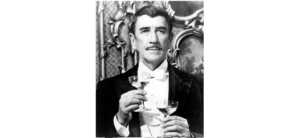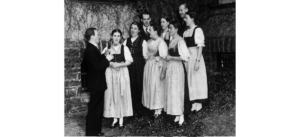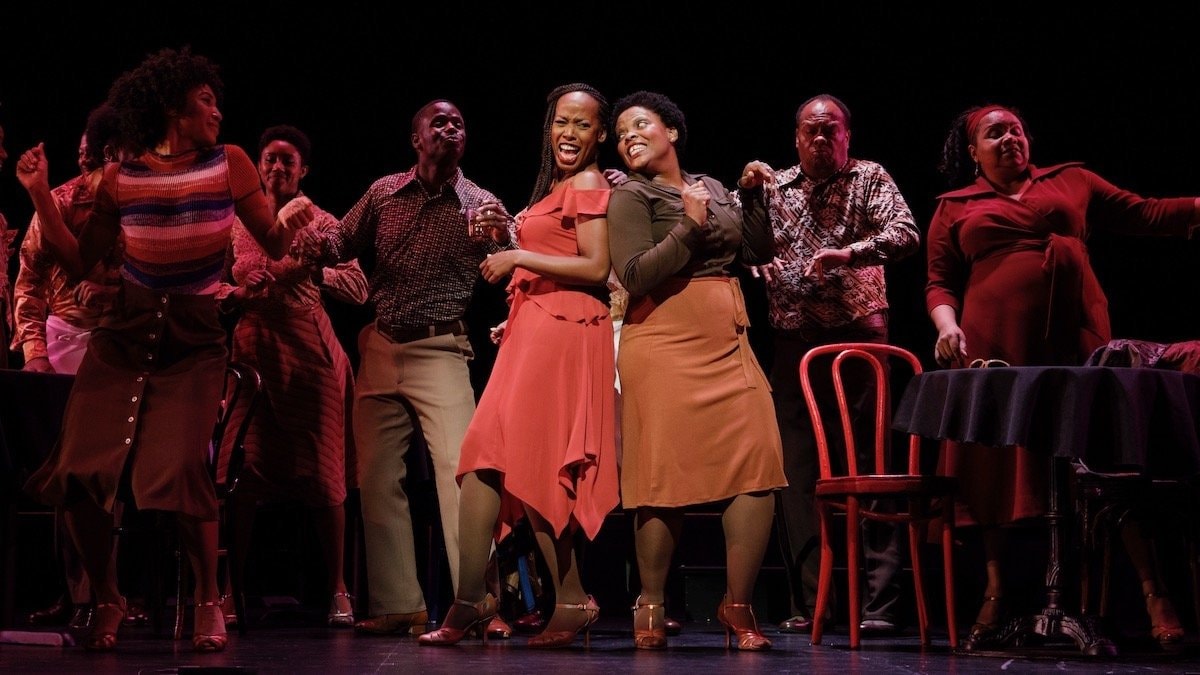
But who were the real-life people behind the classic musical? Was there really a Baroness? And what about Max? Here’s a look at the people who inspired the characters in one of our Favorite Things.
Maria

In the show:
Maria von Trapp, the spirited and warmhearted protagonist, is a young Austrian woman whose life takes an unexpected turn when she leaves the convent to become the governess for the seven children of the widowed Captain Georg von Trapp. Maria brings music, joy and love back into the von Trapp family home with her infectious enthusiasm and kind nature. Through her adventures, Maria discovers her own voice and the courage to follow her heart, ultimately finding, in the Von Trapp home, a place where she truly belongs. Her journey from the convent to the heart of the von Trapp family unfolds against the backdrop of the beautiful Austrian Alps and the looming threat of World War II, making her story an unforgettable tale of love, family and resilience.
In real life:
While sharing a core of kindness and musical talent with her fictional counterpart in The Sound of Music, the real-life Maria von Trapp differed in several ways from the character portrayed in the stage musical. The historical Maria was a strong-willed and sometimes abrasive woman, qualities that were softened for the musical to make her more universally appealing. Her marriage to Captain Georg von Trapp was initially more a matter of practicality than the romantic love story depicted on stage; it was their shared love for music and the children that eventually deepened their relationship. Additionally, the von Trapp family’s escape from Austria was far less dramatic in reality than the musical’s thrilling depiction, involving a simple train journey rather than a daring mountain crossing.
The Captain

In the show:
Captain Georg von Trapp is a stern and disciplined widower who commands his household like a ship, reflecting his background as a decorated officer in the Austrian Navy. Initially distant from his seven children, he keeps his emotions tightly controlled following the loss of his wife. The arrival of Maria, the family’s new governess, begins to melt his icy exterior, revealing a warm, caring heart and a deep love for music that he had repressed in his grief. Captain von Trapp’s character undergoes a significant transformation throughout the musical as he rediscovers joy, music and love, ultimately choosing to stand up against the Nazis encroaching on his beloved Austria. His journey from a cold authoritarian to a loving father and husband makes him one of the musical’s most complex and endearing characters.
In real life:
The real-life Captain Georg von Trapp was also a decorated naval officer and a loving father, but he differed in demeanor and personality from the stern, distant character seen on stage. In reality, Georg was not as strict and aloof as depicted; he was warm and involved in his children’s lives, sharing a close bond with them before Maria’s arrival. Contrary to his character’s initial disinterest in music in the musical, the real Georg was musically inclined and encouraged musical activities in his household. The adaptation simplified and dramatized aspects of his personality and life for theatrical effect, focusing on the transformational impact of Maria and the family’s musical unity in the face of adversity.
Max

Credit: 20th Century-Fox/Photofest
In the show:
Max Detweiler serves as the comedic, charmingly opportunistic music producer and family friend to the von Trapps. Max is always on the lookout for the next big act and quickly recognizes the musical talent within the von Trapp family. Though often seen as self-serving and somewhat lacking in moral fortitude, especially in his willingness to appease the Nazi regime for personal gain, Max’s character adds a layer of humor and realism to the story. Despite his flaws, he genuinely cares for the von Trapp family and plays a crucial role in their musical journey, encouraging them to perform at the festival, which becomes pivotal to their escape plan. Max’s character, with his witty one-liners and pragmatic approach to life’s challenges, provides a counterbalance to the more earnest and idealistic characters, making him a beloved, if morally ambiguous, figure in the musical.
In real life:
In the real-life story of the von Trapp family, there was no single individual who directly corresponds to the character of Max Detweiler as depicted in the stage musical. Max is a fictional composite created for the purposes of the narrative. In reality, the von Trapp family’s musical career and decision to flee Austria were influenced by several factors and individuals, but the character of Max, with his distinctive personality and role in encouraging the family’s musical performances, was an invention of the show’s creators to add depth, humor and conflict to the story.
Elsa

Credit: 20th Century-Fox/Photofest
In the show:
Elsa Schraeder is portrayed as a sophisticated and wealthy socialite from Vienna who is engaged to marry Captain Georg von Trapp when Maria first arrives. Elsa is elegant, worldly and pragmatic, embodying the cosmopolitan allure of urban Austria contrasted with the wholesome and natural lifestyle of the von Trapp family. While not a villain in the traditional sense, her views on life, love and politics clash with those of the Captain and Maria, particularly in her willingness to accommodate the encroaching Nazi regime for the sake of convenience and security. Elsa’s character adds complexity to the narrative, presenting a foil to Maria’s innocence and passion and highlighting the moral and cultural dilemmas faced by the characters. Her eventual realization that her vision of the future vastly differs from that of the Captain’s leads to their amicable breakup, paving the way for the love story between Maria and Georg to flourish.
In real life:
The character of Elsa Schraeder loosely represents a real-life figure, though with significant artistic liberties taken for the sake of drama and narrative cohesion in the musical. In reality, before marrying Maria Augusta Kutschera (who became Maria Augusta von Trapp), Captain Georg von Trapp was indeed close to a woman named Princess Yvonne, though not engaged to her. Princess Yvonne was a friend of the family, and any romantic involvement is not documented in the same way as depicted in the musical and film adaptations. The character of Elsa Schraeder, with her distinct personality and societal views, was created to add depth to the storyline, providing a contrast to Maria and highlighting the cultural and ideological divides within Austria at the time. This creative decision enriches the narrative, creating a more complex love story and offering insight into the choices facing individuals in the shadow of the Nazi annexation of Austria.
The Children

In the show:
The von Trapp children are central to the story’s charm and emotional depth. Each child, from the eldest, Liesl, to the youngest, Gretl, has a distinct personality that shines through their interactions with Maria, the spirited governess who introduces them to the joy of music and singing. Liesl is a teenager navigating the complexities of first love, while Friedrich shows a stoic exterior that belies his sensitivity. Louisa is clever and mischievous, Kurt is gentle and inquisitive, Brigitta is intelligent and observant, Marta is sweet and somewhat shy, and Gretl, the youngest, is adorable and endearing. Together, they form a vibrant and dynamic group that transforms from being strictly disciplined by their father to expressing themselves freely through song, a change catalyzed by Maria’s influence. Their journey from isolation to unity and joy through music is a touching and integral part of the musical’s appeal, capturing the hearts of audiences with their innocence, growth and familial bonds.
In real life:
While sharing the core experience of music transforming their family, the real-life von Trapp children had several differences from their fictional counterparts. Firstly, there were ten von Trapp children, not seven, including three from Georg von Trapp’s second marriage to Maria. Their names and ages were also changed for the stage musical and film adaptation. The real-life children were named Rupert, Agathe, Maria, Werner, Hedwig, Johanna, Martina, Rosmarie, Eleonore and Johannes. In reality, the family’s musical journey began before Maria’s arrival, initiated by the children’s mother, Agathe, and later nurtured by Maria. The real children’s lives, enriched by their musical talents and resilience, spanned continents and decades, far beyond the scope of the musical’s narrative.
To license a production of The Sound of Music, visit Concord Theatricals in the US or UK.

Recommended Shows for Drama Festivals

The Truth Behind… The Normal Heart

